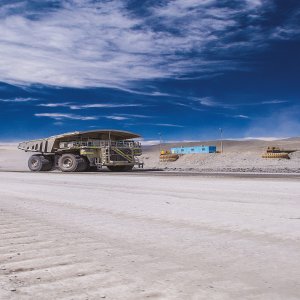The Advantages Of An Industrial Revolution

STORY INLINE POST
Q: How can Industry 4.0 revolutionize the mining sector in Mexico?
A: The mining industry is aware of the trend toward greater technological implementation. It is racing against time and if it fails to introduce the required technology, it will lose its competitiveness. SKF remains a robust player in the Mexican market because we collaborate and have a solid relationship with the national champions. Our goal is to disrupt through technology by betting on Industry 4.0. This trend started in Germany 10 years ago and while in Mexico it is still developing, mining can really benefit from it, especially given the high expenses related to staff turnover. Seeking to foster that, we opened a Solutions Factory in Monterrey to remotely monitor client assets. We can efficiently and remotely supervise the equipment’s vibration, temperature and productivity, among other key indicators. As Industry 4.0 has technology evolving at a faster rate, we perceive the trend is moving toward the development and implementation of sensors at mine sites and with mining machinery.
We believe there are several ways in which Industry 4.0 can revolutionize the industry. Monitoring through the implementation of control centers is one, for which we have strategic alliances with other suppliers to improve our offering in control systems. This specifically ensures the proper maintenance of critical equipment that needs to work 24/7. Industry 4.0 is also related to energy generation and can help provide miners with clean energy for their operations. At the moment, Grupo México and Industrias Peñoles are betting on wind parks. Also, Cananea and Nacozari are some of the biggest and most productive mines we are working with to implement Industry 4.0 in the country. SKF is willing to input the technology and the expertise for data analysis but we first need to convince the miners about the benefits. We provide a free trial period of around three to six months to develop databases. This is the basis for the Internet of Things (IoT), which can significantly decrease the cost of capital in mines.
Q: How can the Mexican mining adopt the best practices from other jurisdictions to increase its competitiveness?
A: SKF’s broad experience in Latin America allows me to say that Mexico is lagging along the path to digitalization in comparison to Chile and Peru, mainly due to the Mexican industry’s resistance to adopt new technologies and new operational models. We need to bet more on digitalization. On the other hand, Mexico is competitive in maintenance strategies and general terms. I find that big operators like Grupo México, Minera Frisco and Peñoles are really moving forward. But the investment in the mining industry in Mexico has decreased, as the country is becoming expensive in terms of labor cost, among others. The Energy Reform is modifying the legal framework but there still needs to be further consolidation to foster a greater level of investment, exploration and production. Also, Mexican fiscal structures could be modified to open access to more mineral deposits as Mexico has huge unexplored potential.
Q: What is the key to SKF’s broad diversification in the mining industry?
A: The key to our diversification is to work with our customers and make them understand the added value of our products in the improvement of their production processes. The mining industry has experienced some complicated years, which has miners increasingly seeking to optimize and cut costs. We believe that our technology helps them to do so because we participate in the whole mining process.
Miners can be reluctant to adopt new technologies, which often causes the industry to overuse their equipment. Our strategy is to work closely with mine operators so they can realize the benefits of new technologies. We analyze operators’ problems and seek solutions together. We place our human talent as close as possible to our customers, working with them at mine sites. We have understood that the industry demands a supply chain that works 24/7. But as machinery is designed to meet certain levels, operators also need to increase this capacity so they can have nonstop production.
























